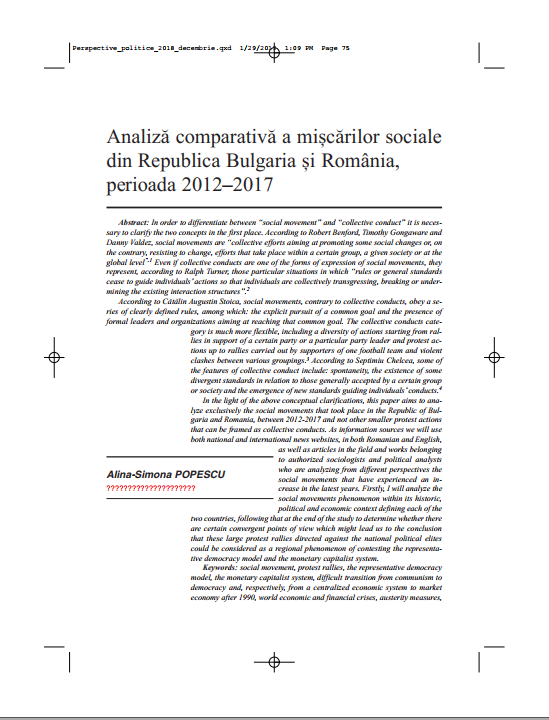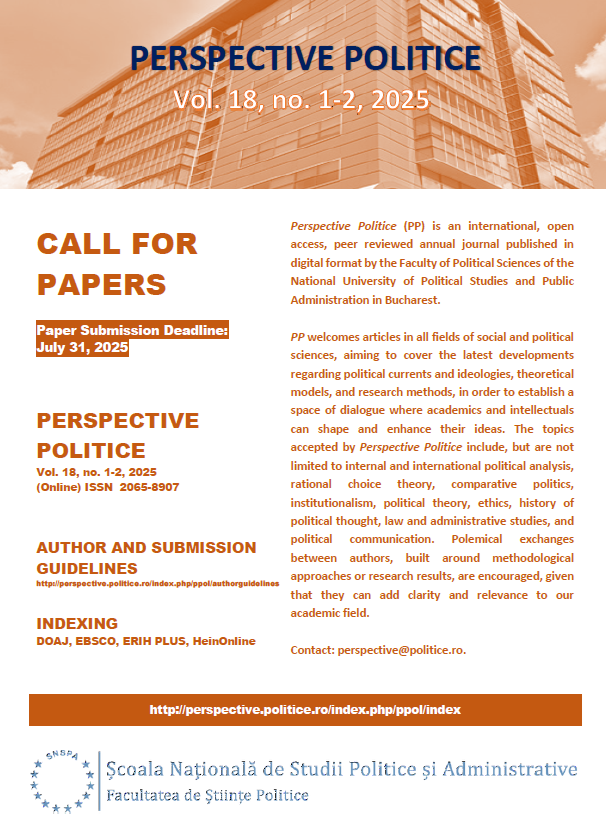Analiza comparativa a miscarilor sociale din Republica Bulgaria si Romania, perioada 2012–2017
Abstract
In order to differentiate between “social movement” and “collective conduct” it is necessary to clarify the two concepts in the first place. According to Robert Benford, Timothy Gongaware and Danny Valdez, social movements are “collective efforts aiming at promoting some social changes or, on the contrary, resisting to change, efforts that take place within a certain group, a given society or at the global level”.1 Even if collective conducts are one of the forms of expression of social movements, they represent, according to Ralph Turner, those particular situations in which “rules or general standards cease to guide individuals’ actions so that individuals are collectively transgressing, breaking or undermining the existing interaction structures”.2 According to Cãtãlin Augustin Stoica, social movements, contrary to collective conducts, obey a series of clearly defined rules, among which: the explicit pursuit of a common goal and the presence of
formal leaders and organizations aiming at reaching that common goal. The collective conducts category is much more flexible, including a diversity of actions starting from rallies in support of a certain party or a particular party leader and protest actions up to rallies carried out by supporters of one football team and violent clashes between various groupings.3 According to Septimiu Chelcea, some of the features of collective conduct include: spontaneity, the existence of some divergent standards in relation to those generally accepted by a certain group or society and the emergence of new standards guiding individuals’conducts. 4 In the light of the above conceptual clarifications, this paper aims to analyze exclusively the social movements that took place in the Republic of Bulgaria and Romania, between 2012-2017 and not other smaller protest actions that can be framed as collective conducts. As information sources we will use
both national and international news websites, in both Romanian and English, as well as articles in the field and works belonging to authorized sociologists and political analysts who are analyzing from different perspectives the
social movements that have experienced an increase in the latest years. Firstly, I will analyze the social movements phenomenon within its historic, political and economic context defining each of the two countries, following that at the end of the study to determine whether there are certain convergent points of view which might lead us to the conclusion
that these large protest rallies directed against the national political elites could be considered as a regional phenomenon of contesting the representative democracy model and the monetary capitalist system.




